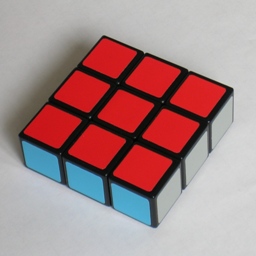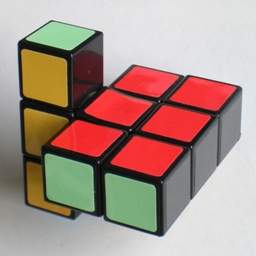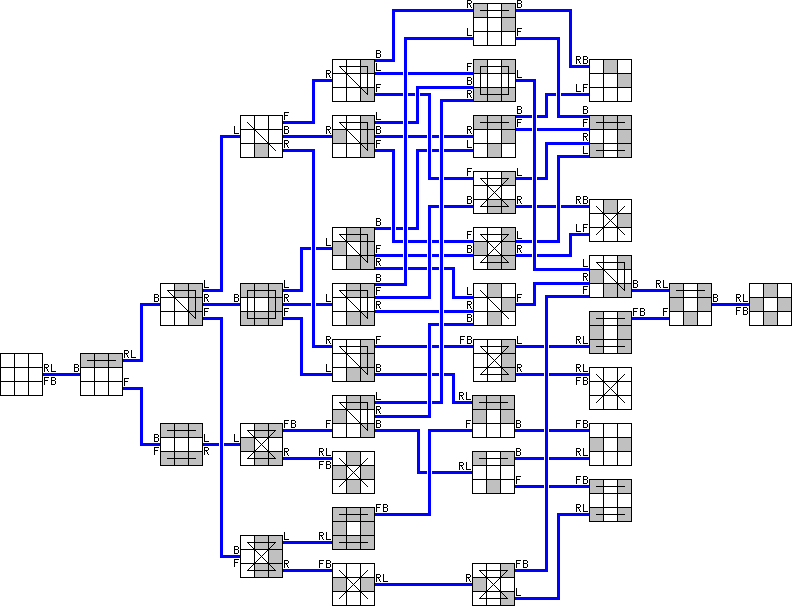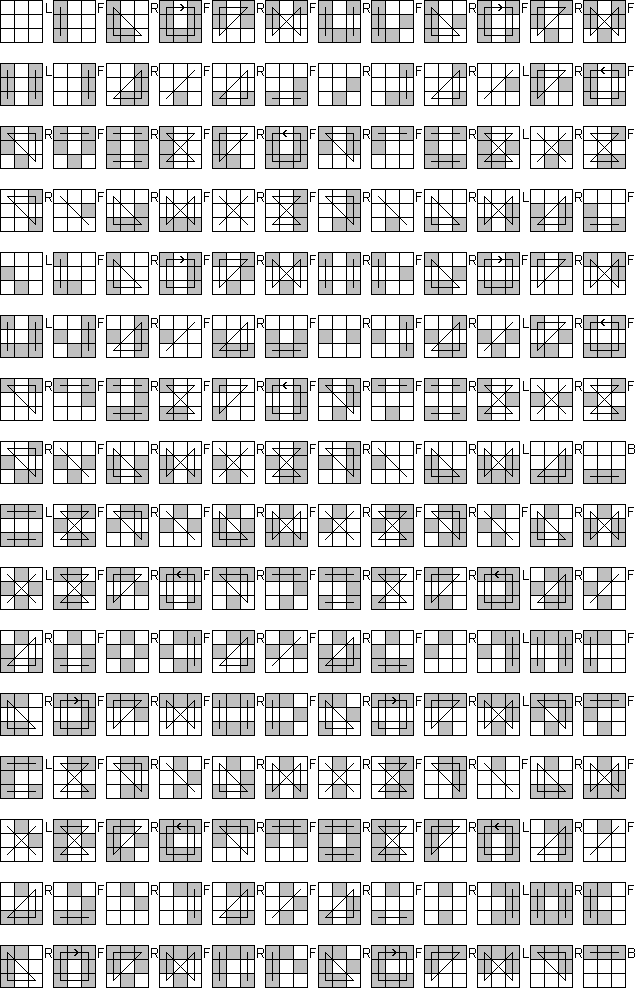



This puzzle was invented by Katsuhiko Okamoto, and made by Gentosha Toys in Japan. It is like a 1×3×3 Rubik's Cube, so it consists of 9 cubes arranged in a square, and each side of 3 cubes can be given a half turn. Halfway through a move the centre cubie deforms slightly to allow the corner cubies to remain connected, and that is where its name comes from.
There are 4 edge pieces which do not move but can be flipped, and 4 corner pieces that do move but cannot be flipped (their orientation is determined by their location). This would give a total of 24·4! = 384 positions. This is not reached however due to a parity constraint. The parity of the corner permutation is the same as the parity of the number of flipped edges. There are therefore 24·4!/2 = 192 positions.
I performed a computer search for this puzzle. The following table shows how many positions there are for each number of moves from the solved position. It shows that it can be solved in at most 8 moves (4.4271 on average).
| Moves | # Positions |
|---|---|
| 0 | 1 |
| 1 | 4 |
| 2 | 10 |
| 3 | 24 |
| 4 | 53 |
| 5 | 64 |
| 6 | 31 |
| 7 | 4 |
| 8 | 1 |
| Total | 192 |
The single antipodal position that takes 8 moves to solve is the 'superflip' R FB R F RL F.
The letters B, F, L and R will denote a move twisting the Back, Front, Left, and Right side of the puzzle.
Below is a graph that can be used to solve the puzzle in the minimum number of moves. By reorienting the puzzle, possibly turning it upside down, any mixed position will match one of the positions shown in the graph.

Let P be the move sequence: L FRFRFRFRFRF L FRFRFRFR L RFRFRFRFRFR L RFRFRFRFRFR L R.
The move sequence PFPB PFPB is 192 moves long, and visits all possible positions exactly
once, returning it to how it was at the beginning. This kind of sequence is sometimes called
a Devil's Algorithm, and is a Hamiltonian cycle on the Cayley Graph. If you apply it to any
mixed position, it will solve it somewhere along the way. A blindfolded person could always
solve the floppy cube by doing this sequence as long as there is someone there to say 'stop'
when it is solved.
